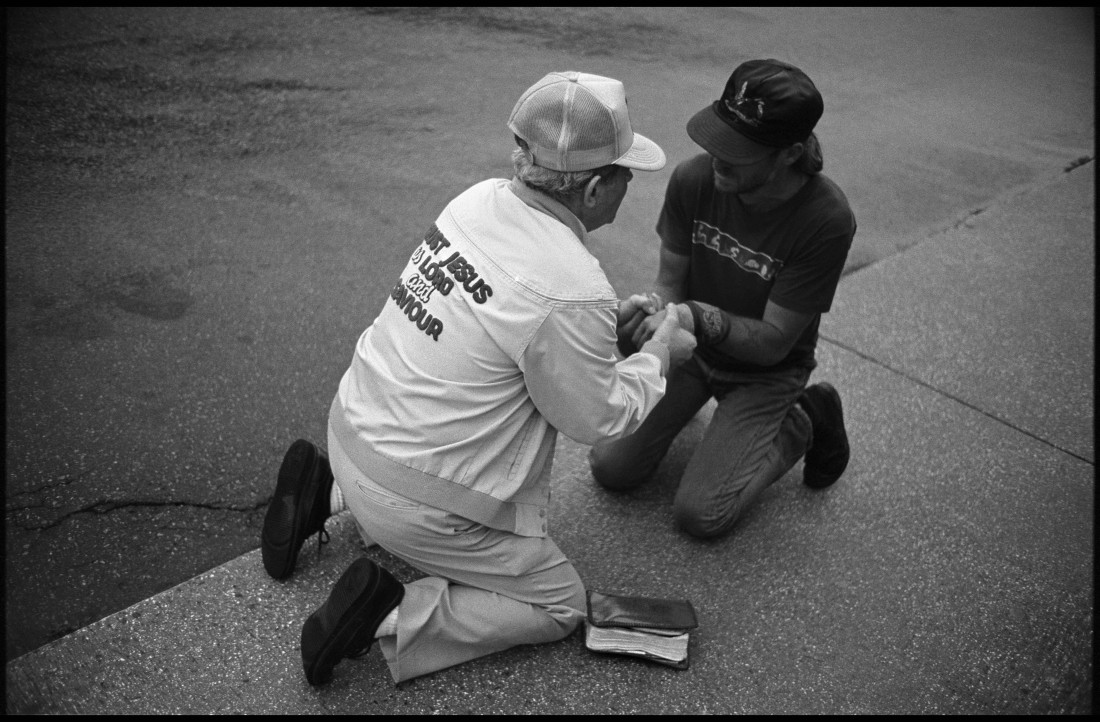Southern Appalachia can thank any number of movies and TV shows for flagrantly misconstruing us as a bunch of lawless, illiterate hicks and hillbillies.
Such characters have softened and intoxicated our sheriffs, put moonshine stills in all of our kitchens and rendered snakes as common as hymnals in our churches. And docudramas such as Moonshiners and movies including Deliverance have made overalls our de facto dress code in the same way that our rivers will permanently call to mind the twang of “Dueling Banjos.”
The history and cultural persistence of these and other insulting-yet-laughable regional stereotypes make up the meat and bones of Hillbilly Land: Myth and Reality of Appalachian Culture, a contemplative and text-heavy new exhibition, curated by author and UNC Asheville history professor Dan Pierce, currently on view at the Smith-McDowell House Museum.
Hillbilly Land weaves through five major pillars of southern Appalachian cultural identity: religion, art and craft, music, moonshine and isolation. Each forms a literal and fantasized foundation of daily mountain life, both historical and contemporary.
The show features a series of information panels that hang in the south side of the museum’s ground floor. These are illustrated by photos from the likes of Tim Barnwell, Doris Ulman, Ralph Burns and Ron Amberg, along with several installation pieces ranging from a banjo, fiddle and a spinning wheel to a copper-topped still and a wooden toy set of a farm, complete with a barn, little chickens and a baby-wielding mother.
Ulman’s photographs depict mountain life, circa the 1930s. The grainy black-and-white stills show artisans crafting chairs and sitting on porches. Others play banjo or work on quilts. They portray the isolated and slowed-down lifestyle that was, and still is, associated with homesteading and remote mountain living. That very isolation is the proposed source of our cultural and social delinquency, and thus the basis for such easy stereotyping.
Meanwhile, the photos of Amberg, Barnwell and Burn shed contemporary light on DIY signage, architectural improvisation and some of the more popular and extravagant examples of Appalachian religious practices, most notably snake handling and river baptisms. Two snakes stretch across an open Bible in one close-up shot. Another view, taken from the middle of a river, looks past a waist-deep preacher, usher and baptismal candidate and toward a short bluff filled with devout onlookers. Only, it’s hardly a river. To the upper left is a large drainage pipe — they’re in a roadside ditch-turned-creek.
Such images play on the exhibition’s overarching cultural and historical binder: ignorance. For it’s our supposed ignorance of place, time, practice and social norms that easily lends to the aforementioned stereotypes and to perceived regional backwardness. But this isn’t to say that the show is an attack. Rather, it’s an introspective and slightly tongue-in-cheek embrace.
Social motifs are on display, placed in Plexiglas cases, as if they’re far-off relics of a remote and isolated past. Only, they’re clearly still alive and well here in Western North Carolina. After all, the banjo is more prevalent than ever thanks to its inclusion in pop music, country and indie rock.
Even the placards play on our imposed cultural awkwardness — title blocks and subject headings all feature a backward letter or two. “They help play on the idea of the region’s backwardness,” says Elaine Blake, volunteer coordinator at the Smith-McDowell House Museum.
“The purpose of this exhibition is not to preach the evils of the hillbilly stereotype, but to challenge the visitor to think about the reality, the complexity and the nuanced texture of mountain life,” Pierce explains in the show’s introduction. He does so through story, rather than data recitation. Where one would expect information placards laden with dense academic prose, Pierce has instead placed poems and literary excerpts from local and regional authors, including Ron Rash, Kathryn Stripling Byer, Michael McFee, Fred Chappell and Wiley Cash. These give the show a narrative flow that’s enjoyable and breaks up the information overload.
Pierce immediately acknowledges the region’s historic complacency in its own cultural misinterpretation. “[Mountain people] willingly played the role when it served to profit them,” he writes. Pierce’s inclusion of historical examples with modern and contemporary cases only goes to prove what could be seen as his main point: that we still play into these identities.
View Hillbilly Land through Dec. 31 at The Smith-McDowell House Museum. Admission is $9 for adults, $5 for students and children. For more information on the exhibition and a list of associated events, visit wnchistory.org.






Wow. Equating river baptism with snake handling. Guess that makes me a participant in one of those “extravagant examples of Appalachian religious practices” (the baptism, not the snakes). The kind of ignorance that equates the two is just as bad as the kind that considers anyone from Appalachia to be uneducated and backward.